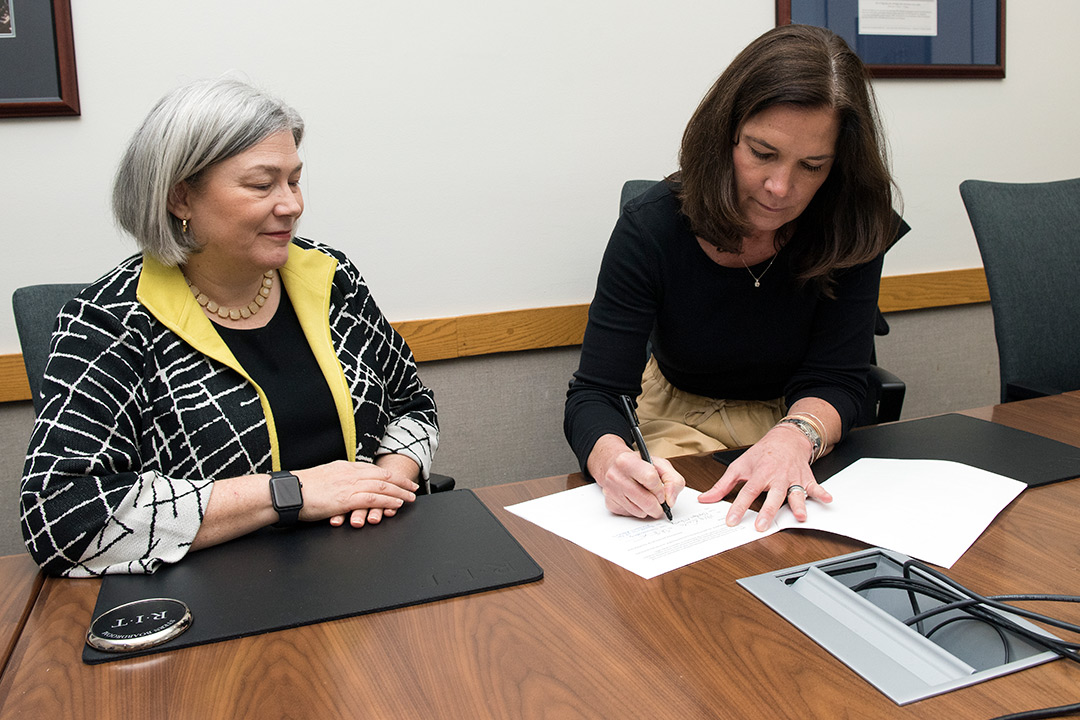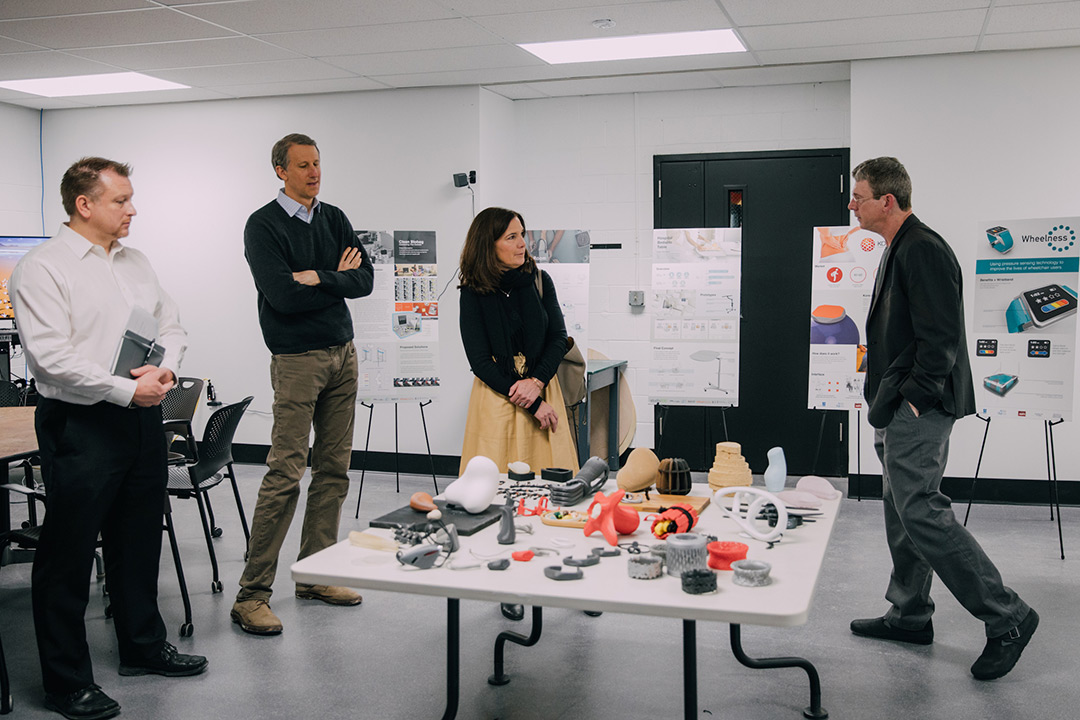RIT and Autodesk sign agreement that expands collaboration across university
MOU builds on multidisciplinary initiatives at the intersection of technology, design and making
Sam Kang
Stan Rickel (right), associate professor of industrial design in the School of Design, speaks with Autodesk executives during the software company’s recent visit to RIT.
Rochester Institute of Technology and Autodesk, the international software company whose name is synonymous with computer-aided design (CAD) software, have signed a partnership agreement that will expand RIT’s multidisciplinary educational initiatives with Autodesk across the university.
RIT already is part of a select group of schools with which the San Francisco-based software company regularly collaborates. Two years ago, RIT’s College of Art and Design and Autodesk signed a Memorandum of Understanding (MOU) that has resulted in RIT students providing exclusive access to alpha and beta versions of the company’s software, breakthrough effective access technology solutions and job hires. The company also flew RIT students to its offices in Portland, Ore., to meet with its product teams and provide direct feedback.
The latest MOU agreement, signed during a recent visit and tour of several RIT colleges, MAGIC Spell Studios and AMPrint Center by Autodesk executives, is the first university-wide partnership agreement between the company and a U.S. college.
 A. Sue Weisler Ellen Granberg, left, RIT provost, and M.H. McQuiston, Autodesk VP, education experiences, sign a Memorandum of Understanding.
A. Sue Weisler Ellen Granberg, left, RIT provost, and M.H. McQuiston, Autodesk VP, education experiences, sign a Memorandum of Understanding.“I am delighted that RIT is teaming up with Autodesk on this campus-wide agreement. Together, we will advance the intersection of technology, design and making,” said Ellen Granberg, provost and senior vice president for Academic Affairs. “Autodesk software can already be found across our university and, with this new agreement, we will be able to expand the array of multidisciplinary opportunities available to our students and faculty.”
Granberg added that the agreement is a further demonstration of the fourth pillar of RIT’s Strategic Plan 2018-2025: Greatness Through Difference, in which collaborations with international partners like Autodesk are increasingly providing enriching experiences for RIT students and faculty.
Since Alex Lobos, associate professor and graduate director of industrial design in the School of Design, first spearheaded RIT’s relationship with Autodesk in 2011, the research and design partnership between the university and the software company has flourished. Lobos has delivered joint conference presentations with company executives and is part of Autodesk University’s Advisory Council. The company has also sponsored several multidisciplinary research projects involving sustainability, accessibility and additive manufacturing on campus. In addition, a number of RIT alumni now work for Autodesk, whose executives have visited the Rochester, N.Y., campus and hosted the university’s board of trustees and other RIT guests during West Coast trips.
“I’m very excited that RIT and Autodesk are expanding this relationship to an even higher level,” Lobos said. “Increasing the integration of technology, design and engineering across our campus will enable more multidisciplinary collaborations and engagement for RIT students and faculty.”
An early result of the partnership agreement is that Generative Design (GD) technology in Autodesk’s flagship Fusion 360 software—the company’s cloud-based 3D computer-aided manufacturing (CAM)/CAD tool—is now available to all faculty and students at RIT. GD is used for creating designs that use significantly less material with nature-inspired forms.
RIT faculty and students can access the technology for free by launching Fusion 360 and logging in with their rit.edu account. RIT alumnus Gregg Stoklosa, an Autodesk program manager who graduated in 1996 (manufacturing and mechanical engineering technology) helped make access to the technology possible.








